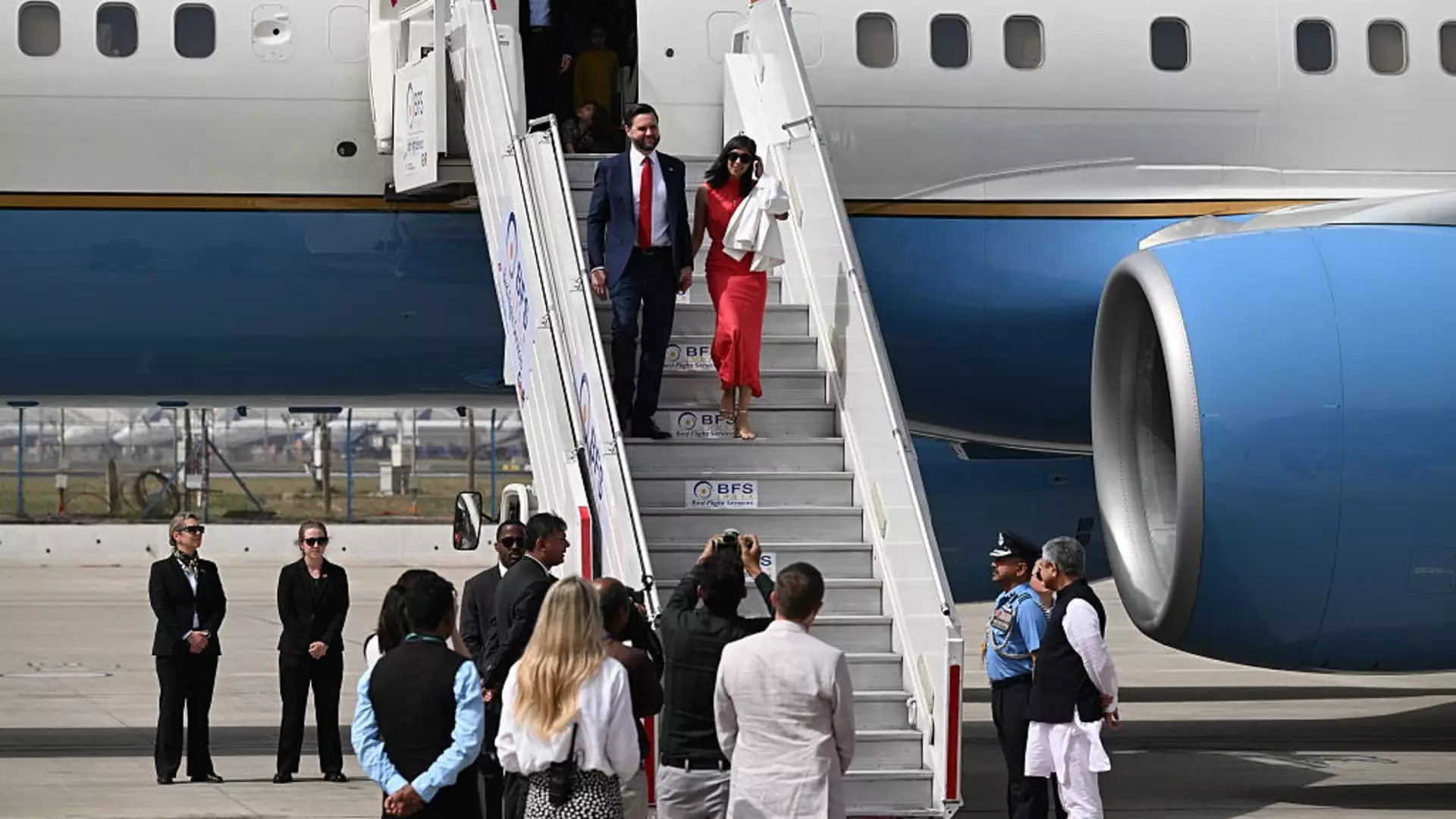When U.S. Vice President JD Vance embarked on his four-day visit to India, the trip wasn’t just a routine diplomatic endeavor; it was a complex tapestry woven with personal ties, cultural exploration, and high-stakes discussions on international trade. Accompanied by his wife, Usha—an Indian-American whose lineage reflects the diverse fabric of the nation—Vance’s presence had a dual purpose. While part of him was there to appreciate the beauty of the Taj Mahal and partake in traditional celebrations, the underlying currents were anything but celebratory. The urgency of U.S.-India relations has become increasingly strained, defined not just by tariffs and trade but by the broader geopolitical rivalry between the U.S. and China.
This sentiment creates a chilling backdrop for a visit intended to strengthen bonds. The image of Vance walking amidst India’s rich cultural heritage, while essential for optics, barely masks the hard-edged negotiations at play. Right before setting foot in India, Vance had just navigated the political corridors of Rome, where he encountered Pope Francis. Ironically, the sanctity of that meeting was a stark contrast to the stark reality of his next engagement with PM Narendra Modi.
Trade and Tension
The bleak reality of tariffs looms large over Vance’s discussions with Modi. With the Indian prime minister trying to quell the apprehension of impending U.S. tariffs, the hope for a trade deal feels precarious. Modi’s government, reported to be entertaining drastic cuts on tariffs for over half of its U.S. imports, is being pushed by a U.S. president who has, rather vocally, labeled India a “tariff abuser.” This tension is an echo of a broader narrative—a tug of war in which both players are trying to gain the upper hand.
Furthermore, the statistics presented by the U.S. trade data depict an unbalanced relationship: a whopping $129 billion in bilateral trade with a notable surplus in India’s favor scrutinizes the legitimacy of “fairness.” This notion has become a catchphrase that is utilized more as a bargaining chip than as a commitment to equitable trade practices. The Indian officials’ anticipation of finalizing a trade deal while Vance is in India gives off the impression of grasping at straws—a desperate attempt to catch the fleeting favor of an unpredictable administration.
Geopolitical Chessboard
As Vance’s trip was unfolding, it wasn’t just about India. It was about positioning—a strategic move on the global stage, mainly against the backdrop of escalating U.S.-China tensions. The complexities of international relations come into sharper focus as Vance’s visit doubles as groundwork for President Trump’s anticipated summit later this year with leaders from the Quad—a strategic alliance that includes India, Japan, Australia, and the U.S.
The rationale behind these diplomatic maneuvers appears to be not just about trade but establishing an ideological bloc resistant to China’s growing influence. What seems to be lost in this high-stakes game is the individual needs and aspirations of the people in these countries, who may ultimately bear the brunt of such top-down decisions. Are commodities and economies worth straining relationships, or should personal connections and cultural exchanges be valued equally?
The Road Ahead: Uncertain and Risk-laden
Despite the optimism expressed by Indian officials, significant hurdles remain. Vance’s entourage is unlikely to push the envelope on finalizing any agreements during this visit. Instead, discussions are expected to lay the groundwork for future engagements that may or may not materialize into substantive actions. The path ahead is laden with risks, and the likelihood of agreements being delayed or derailed in the face of political pressures should not be underestimated.
The narrative that the Vice President’s visit serves as a diplomatic lifebuoy in turbulent waters raises eyebrows. Is the political theater being mistaken for genuine progress? India and the U.S. may continue to navigate a complex relationship characterized by ambition, but one thing is crystal clear: this isn’t merely about a trade deal; it’s about the survival and resilience of connections forged through shared history and ideology.
While personal visits serve essential purposes of fostering goodwill, in the larger tapestry of international relations, they often feel like interludes amid a symphony of discord. Vance’s India visit could be emblematic of much more—a desperate attempt to reframe narratives while grappling with the realities of an uncertain future.

